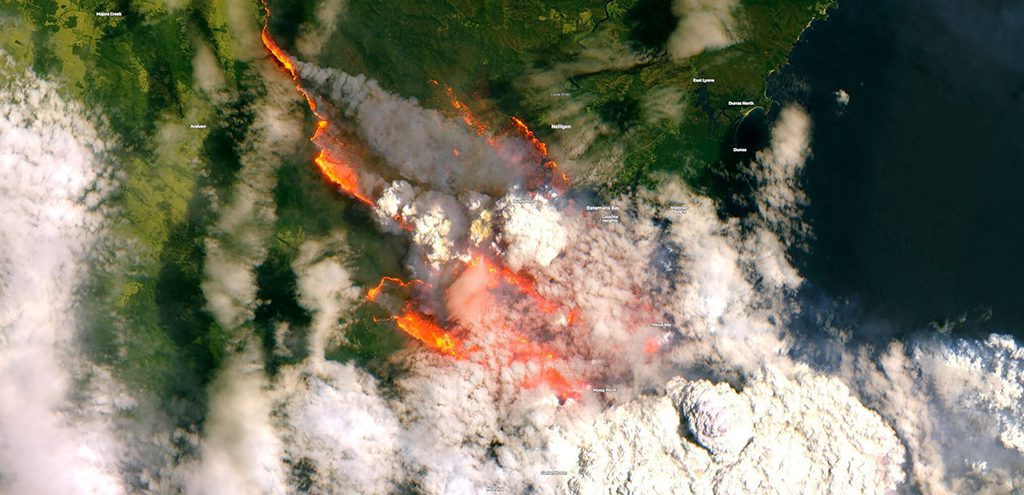
Australia is being ravaged by the worst wildfires seen in decades, with large swathes of the country devastated since the fire season began in late July.
There have been fires throughout the continent, but the southeastern state of New South Wales (NSW) has been the hardest hit. The fires range in area from small blazes — isolated buildings or part of a neighborhood — to massive infernos that engulf entire hectares. Some start and are contained in a matter of days, but the biggest blazes have been burning for months. In total, more than 17.9 million acres have been burned across Australia’s six states — an area larger than the countries of Belgium and Denmark combined.
For some context as to how widespread these fires are, consider other recent destructive wildfires: the 2019 Amazon rainforest fires burned more than 17.5 million acres according to Brazilian officials. In California, which is known for its deadly wildfires, just over 247,000 acres burned in 2019, and about 1 million acres in 2018.
While each year there is a fire season during the Australian summer, with hot, dry weather making it easy for blazes to start and spread, this year is different. The country, which has suffered years of drought, experienced its hottest day on record last month, reaching an average maximum temperature of 105.6 degrees Fahrenheit. And Australia has experienced nine of its 10 warmest years on record since 2005, according to the Australian government’s Bureau of Meteorology. Scientists also agree that climate change plays a factor in the extent of bushfires this year, a claim that has, unfortunately, been disputed.
So what can people like us on the other side of the world do? There are numerous organizations across the world working to help that you can support.
You can also do your part to mitigate the effects of climate change right here! Encourage elected leaders locally and nationally to recognize the dangers of a warming planet and implement policies that curb climate change and support resilience.
And as you know, you can always plant a tree! Trees act as giant filters, removing pollutants and harmful emissions that warm our planet and contribute to climate change. The results are amazing: one large tree can absorb more than 5 pounds of smog-causing pollutants each year. We make it super easy – we’ll plant a tree for free in your yard through one of many residential planting programs.

